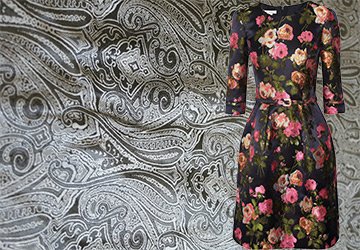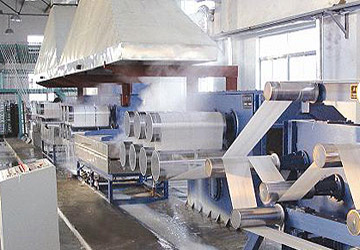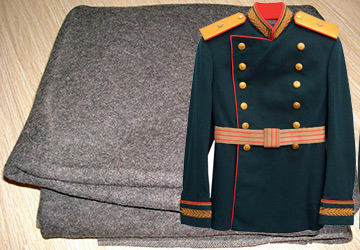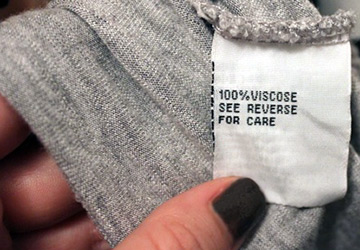Materials Science
Natural linen - history and properties of fabric
If you have seen a field during flax flowering, most likely you have not forgotten this marvelous sight. Flax has unique properties that help humanity to turn to it for more than one millennium. And today, despite the tremendous development of the chemical industry for the production of various artificial fibers and synthetic materials, the cultivation of flax and the production of fabrics and threads from it has not decreased. Flax remains as popular as it was many thousands of years ago.
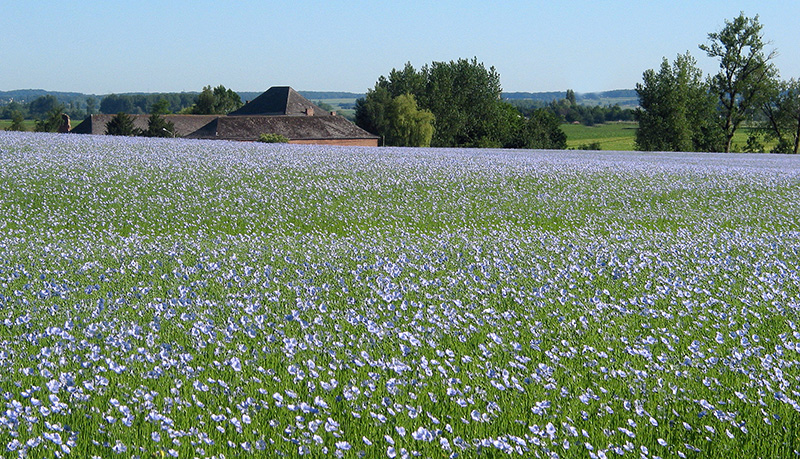
You can already read about linen fabrics in the Bible, and samples of these fabrics, which were used by people in the VIII-III centuries. BC e., were discovered in ancient excavations in Switzerland. This is confirmed by museums that store ancient finds. Even ancient frescoes and drawings on Greek vases tell us about the methods of obtaining flax. It was spread, dried, then crumpled, ruffled, scratched, and then spun. Ships sailed under linen sails; masterpieces of painting have come down to us on linen canvases. Linen fabrics have supplanted even clothing made from animal skins.
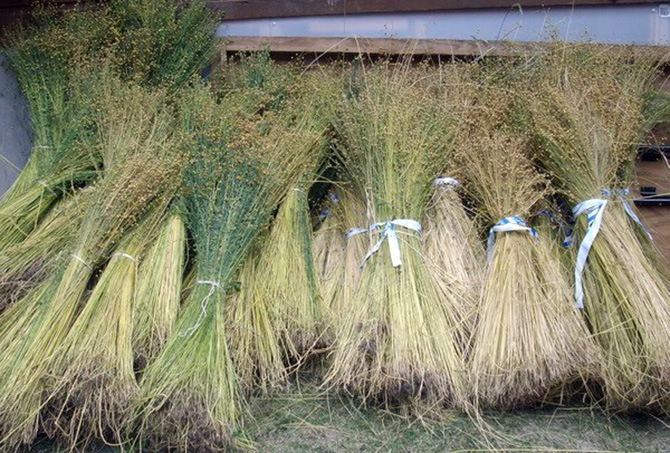
Linen gives people oil, clothes, threads from which the finest fabric is made, Brussels, Yelets, Vologda lace, bed linen, tablecloths, linen. All products made from it are distinguished by excellent hygienic qualities, strength, durability, and resistance to decay.
But still, it is believed that the production of linen fabrics was taken seriously in ancient India almost 9000 years ago. Since then, flax has been cultivated as a spinning crop. Then Assyria, Babylon, Egypt and other countries borrowed this business. Especially for the manufacture of linen fabrics, Egypt became famous, where they received the finest, almost transparent fabrics - through five layers of such fabric, the body shone through.
The quality of linen fabric is determined by the length of the thread obtained from 1 kg of yarn. For example, if 10 km of thread is obtained from 1 kg of yarn, then the number of such a thread is 10. Now imagine that the Egyptian weavers were spinning the thread with the number 240. How did the Egyptians manage it? The answer to this question is simple - the secret of making such threads has been lost by mankind. Such fabric was valued at the price of gold. Consequently, only royal persons and priests wore clothes of the finest linen. And they also made bandages from flax for swaddling the embalmed bodies of the dead.
Flax moved from Egypt to Greece, the ancient Greek historian Herodotus wrote about it. He brought us information that a cloth was brought as a gift to Athena of Rhodes, the thread of which consisted of 360 finest threads. Such fabric, valued for its weight in gold, was also produced in ancient Colchis, that is, they also knew about this secret. Historians suggest that the campaign of the Argonauts to Colchis for the "golden fleece" was connected precisely with the purpose of unraveling the secret of making the finest linen fabric. The secret has not reached us.
Linen clothes are loved and Romans, and the Gauls and Celts borrowed flax from the Romans, in other words, the whole of Western Europe. In the Middle Ages and during the Renaissance, linen was the most common fabric. But gradually the ancient secrets of making fine fabrics were lost, and linen in some countries began to be used at a primitive level. One way or another, flax was used in Central Asia, Australia, and Eastern Europe.

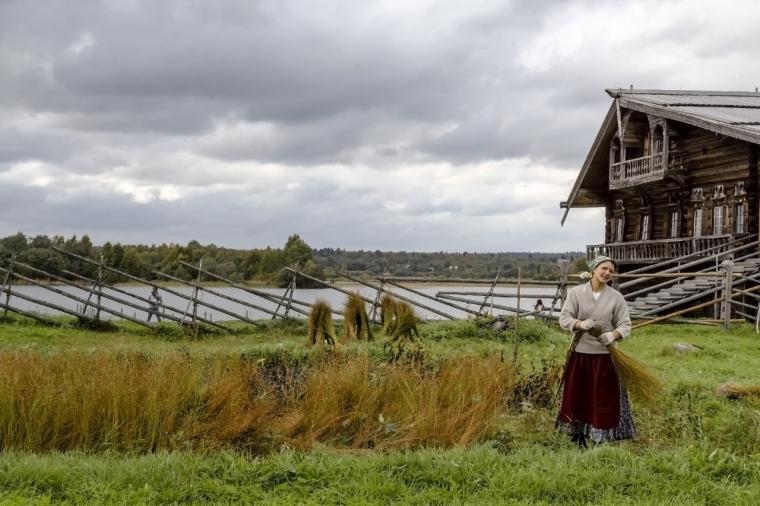
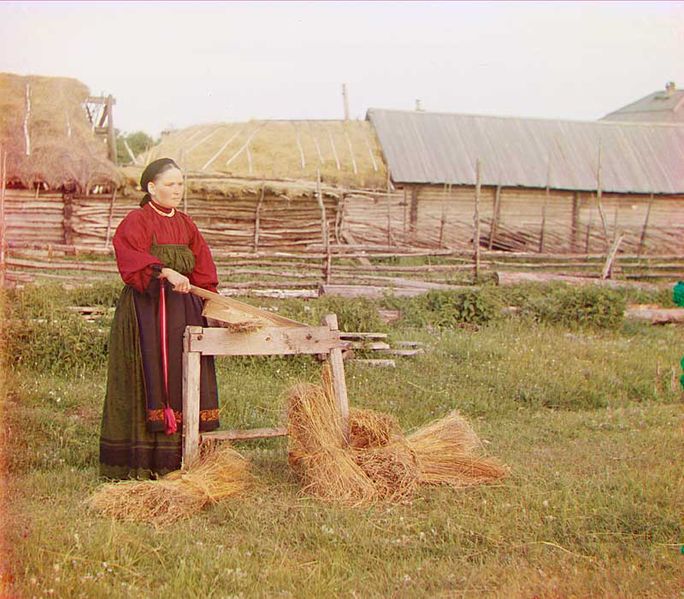
Where did the flax culture come to us in Russia? Historians suggest - from Greece... In any case, before the formation of Kievan Rus, Slavic tribes had long been engaged in flax growing; in the Baltic States in pagan times there were patron gods of flax. Chronicler Nestor in "The Tale of Bygone Years" tells about how flax was cultivated, as well as about the production of linen fabrics and oil by the Caves monks.
In Russia, flax was treated with special respect, it was valued for its healing power, and clean, white linen clothes were a symbol of moral purity. In the 13th century, the flax trade occupied a prominent place in Russia; the center of commercial flax growing was in Pskov, Novgorod and Suzdal. Russian princes collected taxes with flax.
Flax processing is a labor-consuming process, and therefore, without mechanization, many countries ended this difficult business. Chemist Gay-Lussac and mechanic F. Girard solved this problem - the mechanical method of flax processing was invented, but in France no one was interested in their business, but in Russia they continued to deal with flax processing, therefore the inventor F. Girard was forced to look for an application for his inventions precisely in Russia. At the suggestion of Alexander I, he founded here the first linen mechanical factory, later the famous Zyrardovskaya manufactory.
As a result, spinning productivity has tripled. Demand for Russian flax increased in Great Britain - in the second half of the 19th century, the share of Russian flax in this country was 70%. Flax soon became an important item of Russian export. Russia supplied flax not only to Great Britain, but also to many Western European countries.
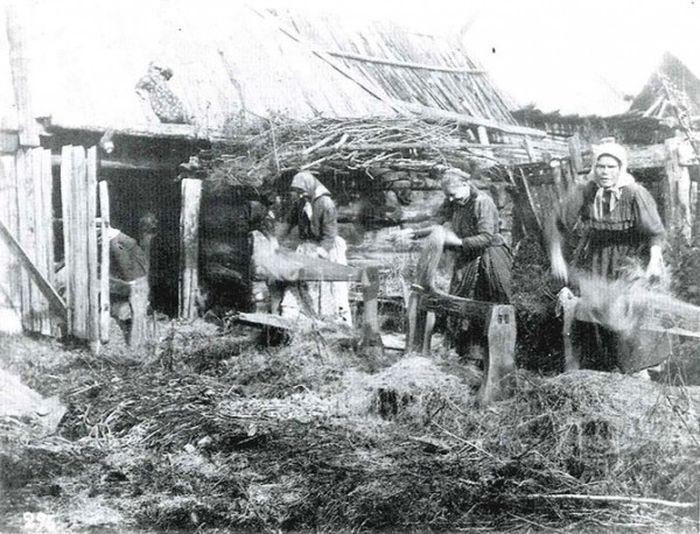
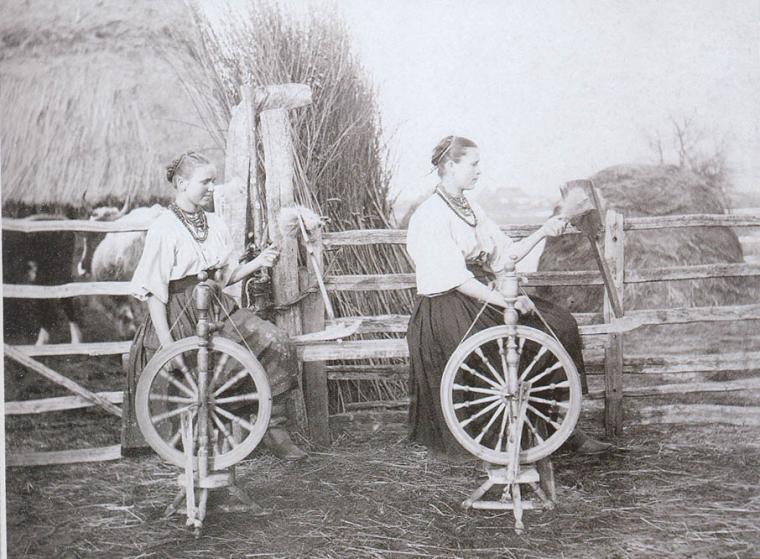
The emergence of new fibers - viscose, synthetic, it would seem, the production of linen fabrics was threatened with extinction, however, natural fabrics have survived, since, combining them with different fibers, more and more new fabrics were obtained. The production of linen fabrics is expanding thanks to the use of cottonin (modified flax fiber).
To obtain costume and dress fabrics, flax lavsan (50 - 60% lavsan fibers), flax capron, flax nitron fabrics are used. For example, linen lavsan fabrics have a woolly, beautiful appearance. With an increase in their composition of lavsan fibers by more than 50%, the fabrics do not wrinkle, as is the case with pure linen fibers. They have good dimensional stability, fit well into folds, but their hygroscopicity is lower in comparison with linen and hygienic properties are also not the same as those of linen fabrics.
Linen viscose fabrics are silky, very beautiful, drape well, but wrinkle, like linen.
Linen fabrics for shape-stability are produced with expressive relief surfaces, plastic ones with various weave patterns, which can be both openwork and imitating hemstitching, as well as with the effect of overhead stitches and with jacquard patterns.
There are fabrics with a melange effect, which are obtained through the use of a mixture of fibers that differently perceive dyes. Fabrics with a grain effect are obtained from linen threads twisted with nylon threads, which, due to their elasticity, pull the linen threads together. It is easy to sew suits, women's summer coats from such fabrics.
And recently, interest in purely linen fabrics has grown for the reason that humanity has appreciated the environmental friendliness of flax in this world, where so much has been lost not only material, but also spiritual and moral.
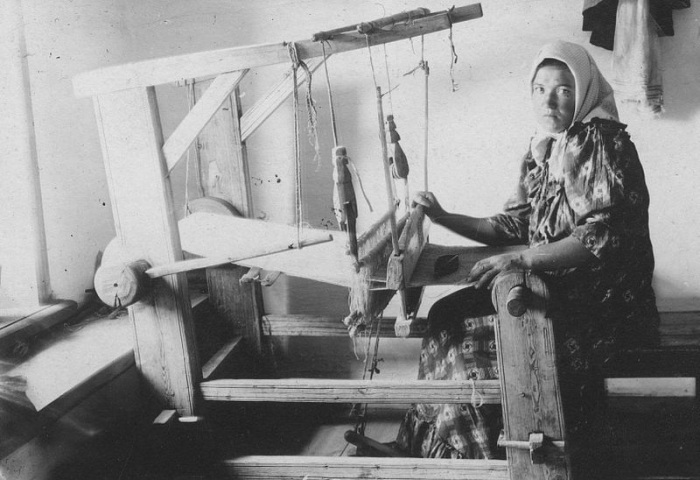
The main stages of the production of linen fabric
First, flax is harvested and flax straw is obtained. This is done with the help of machines. Then it is soaked, for which the flax is spread in the fields for 2-3 weeks (the dew will soak). Finally, the primary processing is carried out: drying, crushing, fluttering. This is followed by spinning production: yarn, which alternately includes carding, ribbon formation, and from the ribbon - roving (a thin twisted ribbon).
Next, fabric production begins (on a loom).
The next operation is finishing production: bleaching and dyeing.
For the manufacture of linen: sheets, towels, light suit fabrics, combed linen is used. Thinner and better quality linen yarn is obtained from it. From the fleece (short fiber) and bast, a coarser yarn is obtained, from which coarse fabrics are made: sack fabrics, canvases and other fabrics.
Waste from linen production is also used - they are used as fuel, and not only as fuel, but also, from which slabs for wall partitions are made, and also used in the production of flooring for parquet and furniture. So flax is used in many areas of production, and not a single part of it is lost.
But since we are more interested in linen fabrics, we will consider their main properties.
Wear resistance and strength.
Environmental friendliness.
Air permeability.
High thermal conductivity.
Minimum electrification.

The ability to remove heat and moisture. What do you think is best to wear in hot weather - synthetic or linen? Each of you has already guessed - of course from flax.
It is linen fabrics, by the way, one of the few that are made from absolutely natural raw materials. Linen fabrics become less dirty, so they can be washed less often, and this increases the product's service life. During wearing and washing, unlike cotton, linen does not turn yellow, but retains both whiteness and freshness.
And it would be good for all girls to know that linen clothes also prevent some diseases, because flax also has bacteriological properties, so no fungi or bacteria can get along on it. Linen fabric is considered a natural antiseptic, microbes and various infections on it die, wounds heal much faster under linen bandages. Namely, the silica contained in flax inhibits the development of bacteria. Now think about what kind of underwear is better to wear on yourself. Linen is also used in surgery when suturing, which the human body does not reject, but completely absorbs.
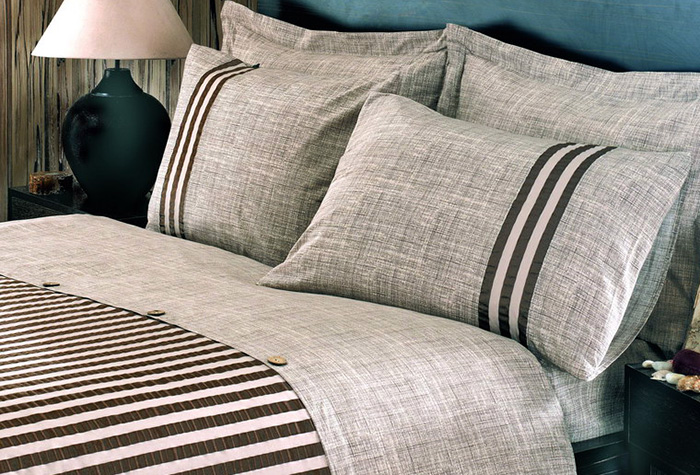
Linen fabric care
White and natural linen fabrics can be easily washed at 90 ° C, and not only, you can also boil them.
It is better to wash colored products at a temperature not exceeding 40 ° C, because you do not know what dyes were used. It is better to wash such things in a gentle mode and with appropriate detergents, without using bleaching and chlorine-containing preparations, which can contribute to the rapid destruction of linen fibers.
The only drawback of linen fabric is that it crumples easily, therefore, during drying, things should be straightened well, and it is better to dry it outdoors. It is necessary to remove things from drying slightly damp, and start ironing. It is necessary to iron through a damp thin cloth (gauze), only then your clothes will be perfect. If you are using a steam iron, the temperature should not exceed 200 ° C.
If you adhere to all the recommendations for the care of linen clothes, it will serve you for more than one year. By the way, gradually over time, your linen clothes become softer, and you will notice that it becomes easier and easier to care for them.
mystyle.decorexpro.com/en/ is sure that after reading about the advantages of linen fabric, she convinced you of her choice for clothes in which you will enjoy for a long time and feel great.
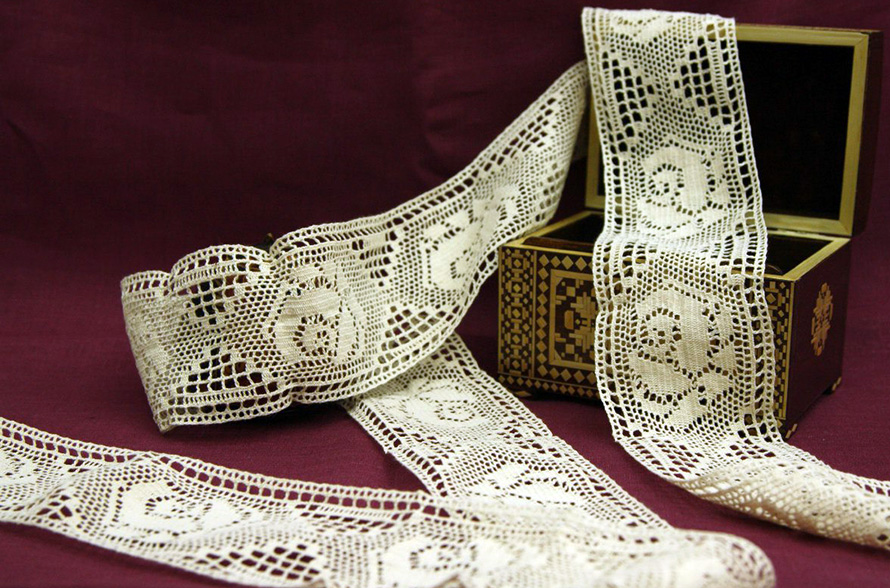
Comments and Reviews
Add a comment
Rating news
Shades of clothing that make women look younger
What shades of hair make women younger: rules and photos
Funny wedding dresses - photos and ideas
12 most expensive down jackets for the winter
How to look 25 at 40: tips from supermodels
Beautiful schoolgirls
Anti-aging haircuts and hairstyles for women
Fashionable skirts for autumn and winter
Fashionable women's trousers for the cold season
Fashionable and stylish sandals for summer 2024
Spring-summer 2024
 Fashionable dresses and tops with thin spaghetti straps
Fashionable dresses and tops with thin spaghetti straps
 Bandana tops: how to wear stylishly and beautifully
Bandana tops: how to wear stylishly and beautifully
 How to put together the perfect men's wardrobe for the summer
How to put together the perfect men's wardrobe for the summer
 Fashionable shorts for spring-summer 2024
Fashionable shorts for spring-summer 2024
 Fashionable skirts for spring-summer 2024: a guide to online shopping
Fashionable skirts for spring-summer 2024: a guide to online shopping
 The most fashionable dresses spring-summer 2024: styles and colors
The most fashionable dresses spring-summer 2024: styles and colors
 Fashionable total look 2024: ideas of images and trends
Fashionable total look 2024: ideas of images and trends

